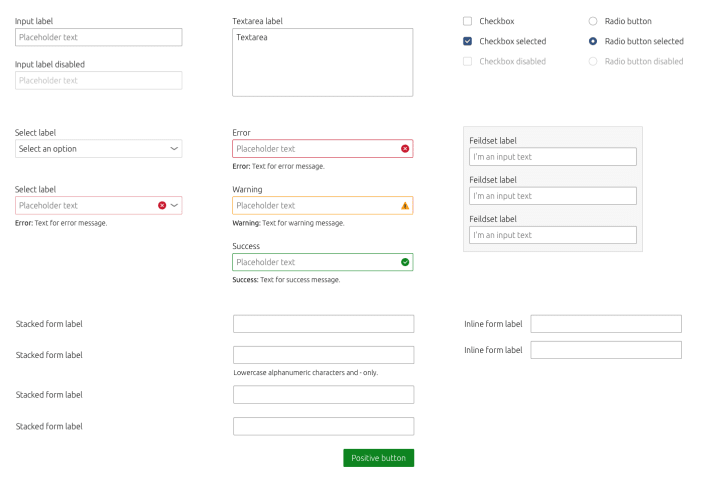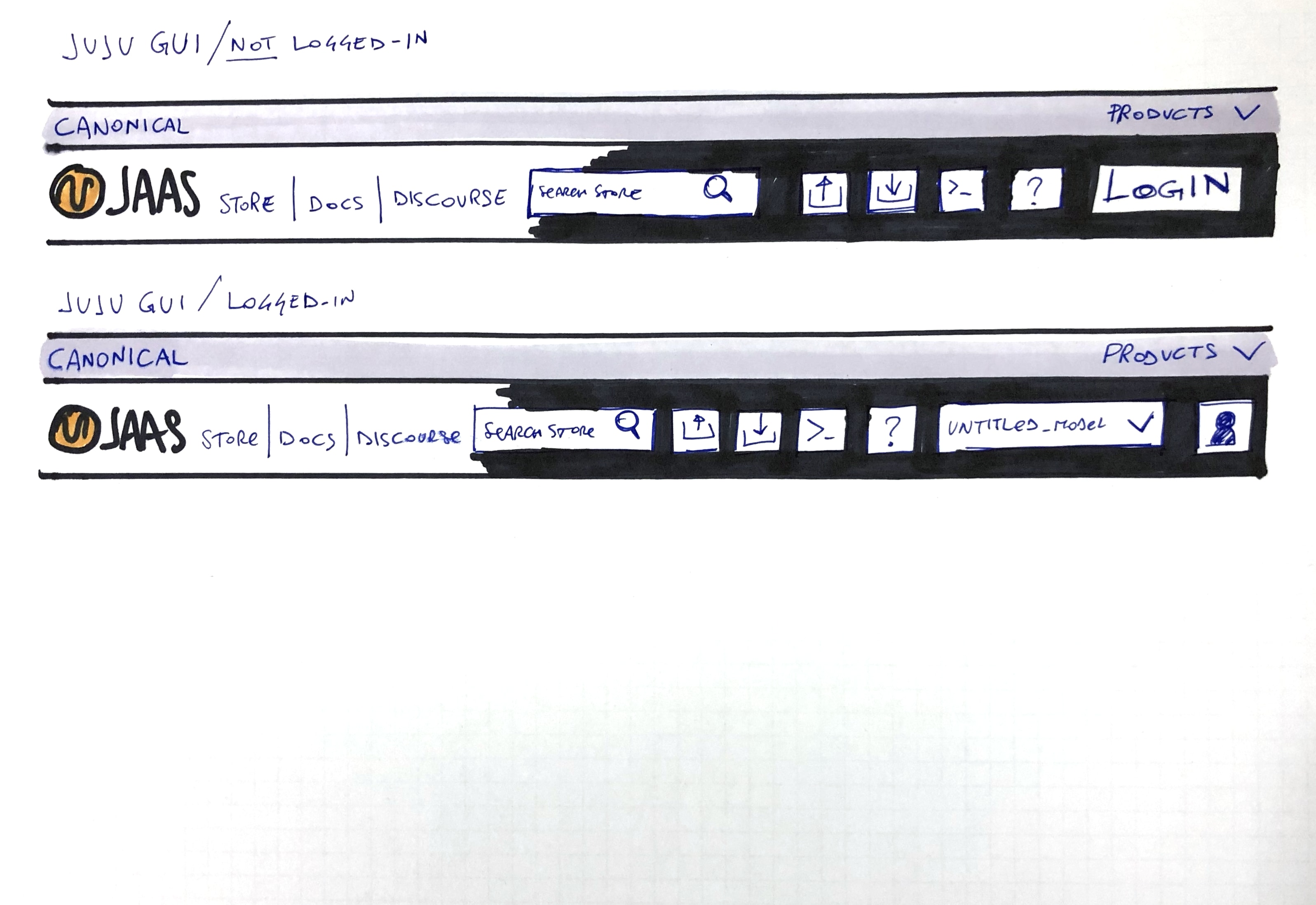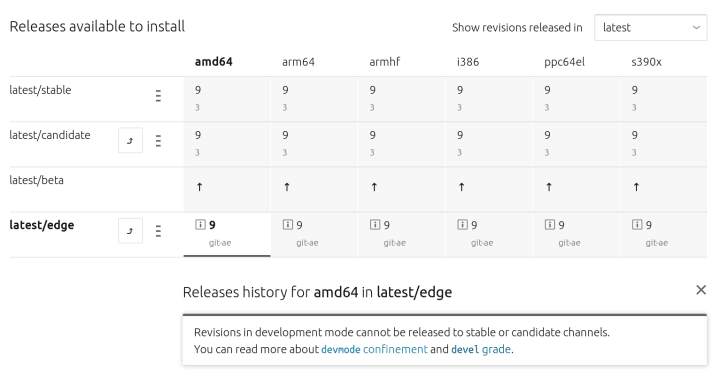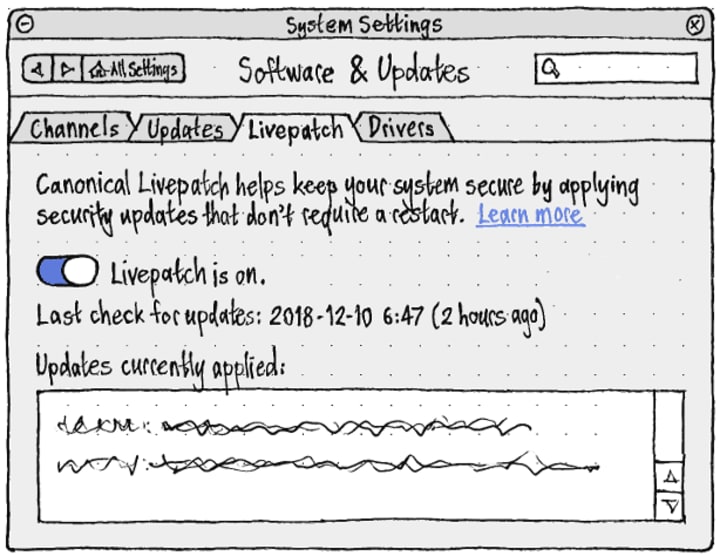Design and Web team summary – 19 December 2018
Anthony Dillon
on 19 December 2018
Welcome to the latest work and updates from the design and web team.
Base squad
This week, the bulk of our work was on improving our internal system for employee reviews, but we found time to squeeze in a few other things:
We also progressed with the initial work for moving our Juju documentation into Discourse, similar to Snapcraft docs.
Our team’s IRC bot (using Hubot) has been a bit poorly recently. Toto finally nursed it back to health, so our team now gets notified for new PRs or releases again.

Robin published a blog post about some of the finer points of managing Git commits, and is working on another one about our open team practices website and repository – to be published soon.

Web squad
New homepage takeovers for MicroK8s – the zero-ops Kubernetes for just about any Linux box – and a Desktop whitepaper.
Continued updates throughout ubuntu.com, namely renaming Canonical distribution of Kubernetes → Charmed Distribution of Kubernetes.


Vanilla squad
Ahead of the upcoming work developing Vanilla Framework v2.0, we wanted to upgrade as many sites as possible to the latest released version of the framework, version 1.8.0.
This lessens the version gaps in our projects allowing the sites to take advantage of recent bug fixes and reducing the effort required for future upgrades.
The upgraded sites are:
- design.ubuntu.com
- netplan.io
- cn.ubuntu.com
- conjure-up.io
- canonical.com
- developer.ubuntu.com
- Canonical’s internal staff directory
We hope to migrate a few more sites before the end of the year and have begun work on a blog post detailing some of the challenges we encountered upgrading the sites.
We use Storybook to demo our react components. We requested that we are listed on their examples page.
Likewise, we updated Vanilla Framework’s showcase page to include some more examples of Vanilla Framework being used in the wild.
Recent changes in forms have been documented in the Vanilla design repository, which is kept as the “one source of truth” for how components are intended to look.

In bugs, a bug where buttons of type “reset” were hidden was fixed and merged into master and we combined documentation for all code-related components into one file.
MAAS squad
Тhis week we tackled two features that turned out to be much more complex than we initially imagined – dismiss failed tests and bulk tagging of machines.
While the developers continued to fix bugs on the MAAS UI in the lead up to the 2.5 release.
JAAS squad
JAAS.ai
The design team is working on the new version of the JAAS website, moving from the current jujucharms.com.
We started looking at analytics (GA, CrazyEggs, and others) in order to identify areas and pages that were performing well in relation to the user story and to the product strategy. We integrated our initial findings with team workshops and created paper mockups to iterate the structure of the website. We started wireframing a possible reorganised content for the homepage, and we are currently iterating the user stories and the use cases on the main landing page.
We are also working on a revisited main navigation, and exploring possible solutions for a unified header between the brochure pages and the Juju GUI, for both logged-in and logged-out experiences.

Brand squad
The brand team worked on multiple projects in this iteration, ranging from an animated holding screen for the reception to an exhibition stand for Shenzen in China. We…
Snap squad
The design team, and more specifically, the Snap squad welcomed a new addition to our UX ranks – Jordan! Jordan’s first task was to tackle the UX of self-serve categories for publishers, a feature that will be implemented and live in the coming weeks.
The release UI – a popular feature for publishers – received some UX and design love to reduce the cognitive load with clearer messaging and navigation hints. There are more updates to the Release UI to make it more intuitive – stay tuned.

It’s now possible for publishers to provide a video of their snap in action from YouTube, Vimeo, or asciinema and in the coming days visitors to snapcraft.io will be able to watch these masterpieces on snap detail pages.
We’re conscious of providing a good experience to all our users, whether on fast or slow connections. To help those on slower connections we’ve updated the snapcraft.io/store page to be less “jumpy” by using placeholder snaps whilst they are being loaded.

Updates to first-snap flow
As part of our ongoing effort to help publishers publish their first snap in their environments & languages of choice, there are new guides for Go & pre-built apps on Linux. Also, thanks to snapcraft 3.0.1, we added new guides for publishing your first Python & go snaps using a MacOS environment. More publishing guides coming soon!
Ubuntu
Canonical’s

Talk to us today
Interested in running Ubuntu in your organisation?
Newsletter signup
Related posts
Improving our web page creation workflow: how structured content is slashing design and development time
Co-authored with Julie Muzina A year ago, during our Madrid Engineering Sprint, we challenged ourselves to dramatically reduce, or even eliminate, the need...
Canonical announces it will support and distribute NVIDIA CUDA in Ubuntu
Today Canonical, the publisher of Ubuntu, announced support for the NVIDIA CUDA toolkit and the distribution of CUDA within Ubuntu’s repositories. CUDA is a...
How we ran a sprint to refresh our design website, Part 2
Part 2 of our series on how our team created content for our design website. Get insights, tools, and lessons to help you run your own design sprint.
